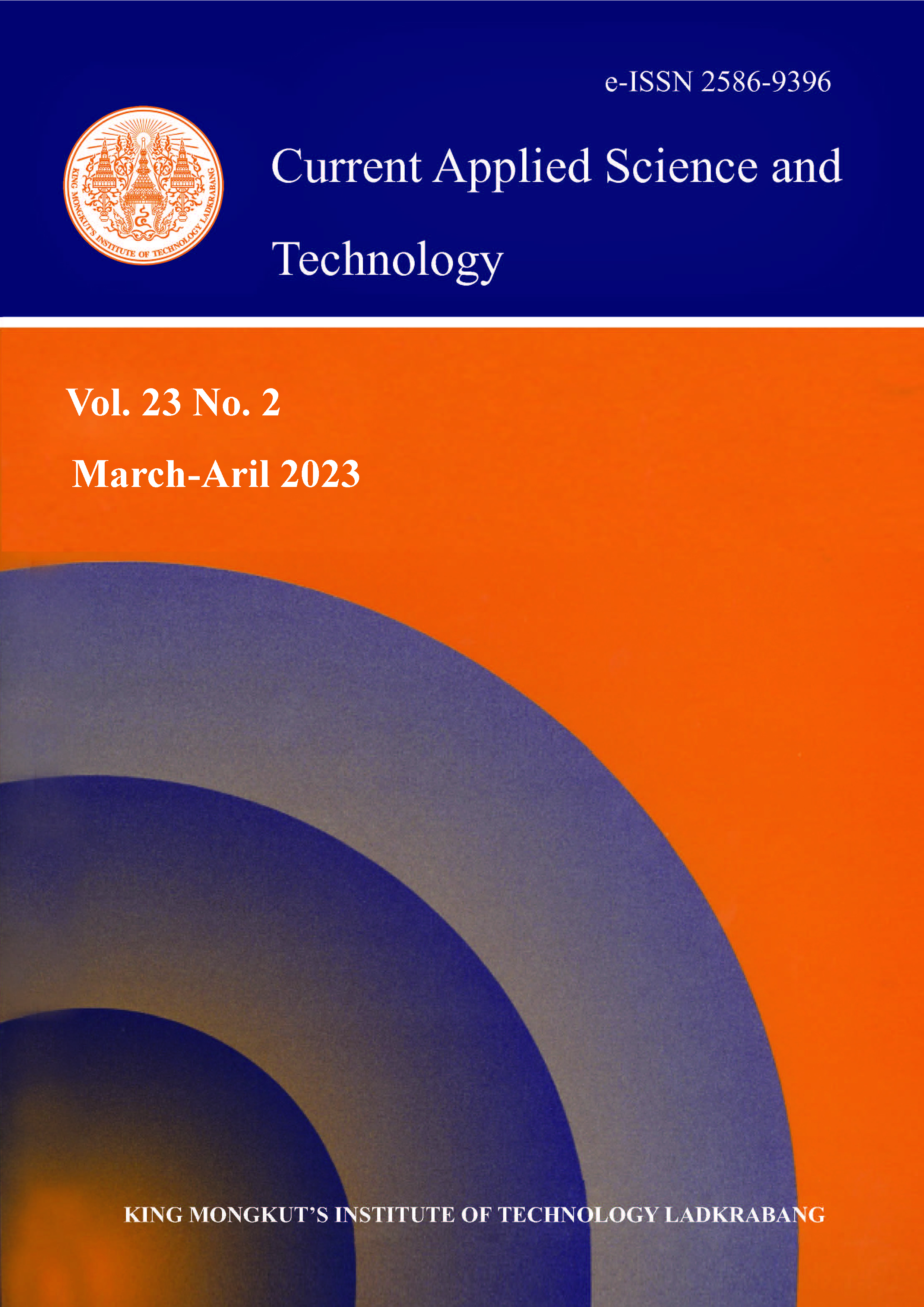Influence of Abiotic Factors on Coir Retting Process
Main Article Content
Abstract
Coconut husk represents the entire fibrous envelop in the fruit and constitute both the exocarp and mesocarp in the raw material for the coir industry. Retting results in separation of this fibrous envelop which is an assemblage of fibers with cork like parenchymatous cells containing a cementing material dispersed throughout the mass. The present study attempted to determine the effect of pH, aeration and degradation capability of aerated leachate on coconut husk retting. The experiment was done in seven buckets of 5L capacity and the pH of water in each bucket was adjusted from 3.0-9.0 with 600g of 11 months old fresh coconut husks immersed in each bucket. The parameters of color, pH, volatile fatty acid (VFA), chemical oxygen demand (COD) and polyphenols were analyzed regularly during the study. The effects of aeration and the degradation capability of aerated leachate was also studied. The VFA and COD level increased initially and then decreased. Neutral pH was found to be ideal for the leaching process.
Keywords: coconut husk; volatile fatty acid; chemical oxygen demand; polyphenol; leachate; sludge; pectin; tannin
*Corresponding author: Tel.: +91 9846932029
E-mail: subisubhadra@gmail.com
Article Details

This work is licensed under a Creative Commons Attribution-NonCommercial-NoDerivatives 4.0 International License.
Copyright Transfer Statement
The copyright of this article is transferred to Current Applied Science and Technology journal with effect if and when the article is accepted for publication. The copyright transfer covers the exclusive right to reproduce and distribute the article, including reprints, translations, photographic reproductions, electronic form (offline, online) or any other reproductions of similar nature.
The author warrants that this contribution is original and that he/she has full power to make this grant. The author signs for and accepts responsibility for releasing this material on behalf of any and all co-authors.
Here is the link for download: Copyright transfer form.pdf
References
Ashik, A., 2018. Socio-economic conditions of coir workers in Kerala. International Journal of Pure and Applied Mathematics, 118(20), 4389-4397.
Nazeer, A., 2014. To Study the mechanical properties of coconut coir fiber reinforced with epoxy resin AW 106 & HV 953 IN. International Journal of Modern Engineering Research, 4(7), 38-46.
Abraham, E., Deepa, B., Pothen, L.A., Cintil, J., Thomas, S., John, M.J., Anandjiwala, R. and Narine, S.S., 2013. Environmental friendly method for the extraction of coir fiber and isolation of nanofibre. Carbohydrate Polymers, 92(2), 1477-1483.
Mishra, L. and Basu, G., 2020. Coconut fibre: its structure, properties and applications. In: R.M. Kozlowski and M. Mackiewicz-Talarczk. Handbook of Natural Fibres. 2nd ed. Oxford: Wood head Publishing.
Ayrilmis, N., Jarusombuti, S., Fueangvivat, V., Bauchongkol, P. and White, R.H., 2011. Coir fiber reinforced polypropylene composite panel for automotive interior applications. Fibers Polymers, 12(7), 919-926.
Sumi, S., Unnikrishnan, N. and Mathew, L., 2018. Durability studies of surface-modified coir geotextiles. Geotextiles and Geomembranes, 46(6), 699-706.
Siakeng, R., Jawaid, M., Ariffin, H. and Sapuan, S.M., 2019. Effect of soil biodegradation on tensile and physical properties of coir/pineapple leaf fiber reinforced poly lactic acid hybrid bio composites. International Journal of Recent Technology and Engineering, 8(2S4), 501-505.
Suja, S., 2014. Impact of coconut husk retting on the physical and chemical characteristics of the water samples of retting and non-retting zone of Paravur Back Water. International Journal of Environmental Sciences, 4(5), 766-771.
Basu, G., Mishra, L., Samanta, A., 2015. Accelerated retting cum softening of coconut fibre. Industrial Crops and products, 77, 66-73, DOI: 10.1016/j.indcrop.2015.08.012.
Odunlami, M.O., Folami, N.A., Oso, A.O. and Omoboh, J.I., 2020. Evaluation of recoverable potash from coconut husk, plantain peel and cocoa pod husk through leaching. International Journal of Latest Technology in Engineering, Management and Applied Science, 9, 42-47.
APHA, 1995. Standard Method for the Examination of Water and Wastewater. 19th ed. New York: American Public Health Association Inc.
Jayasankar, N.P. and Menon, K.P.V., 1961. Microbiological flora of a few retting areas. Coir 5(3), 33-36.
Poncet-Legrand, C., Cabane, B., Bautista-Ortín, A.-B., Carrillo, S., Fulcrand, H., Pérez, J. and Vernhet, A., 2010. Tannin oxidation: intra- versus intermolecular reactions. Biomacromolecule, 11(9), 2376-2386, DOI: 10.1021/bm100515e.
Kirk, T.K., Higuchi, T. and Chang, H., 1980. Lignin Biodegradation: Microbiology, Chemistry, and Potential Applications. Vol. 1. Boca Raton: CRC Press.
Lukitawesa, Patinvoh, R.J., Millati, R., Sárvári-Horváth, I. and Taherzadeh, M.J., 2020. Factors influencing volatile fatty acids production from food wastes via anaerobic digestion. Bioengineered, 11, 39-52.
Field, J., Leyendeckers, M.J.H., Sierra-Alvarez, R., Lettinga, G. and Habets, L.H.A., 1991. Continuous anaerobic treatment of autoxidized bark extracts in laboratory scale columns. Biotechnology and Bioengineering, 37(3), 247-255.
Fan, J., Ji, F., Xu, X., Wang, Y., Yan, D., Xu, X., Chen, Q., Xiong, J. and He, Q., 2015. Prediction of the effect of fine grit on the MLVSS/MLSS ratio of activated sludge. Bioresource Technology, 190, 51-56.
Kumar, K., Singh, G.K., Dastidar, M.G. and Sreekrishnan, T. R., 2014. Effect of mixed liquor volatile suspended solids (MLVSS) and hydraulic retention time (HRT) on the performance of activated sludge process during the bio treatment of real textile waste water. Water Resources and Industry, 5, 1-8.
Mata-Alvarez, J., Macé, S. and Llabrés, P., 2000. Anaerobic digestion of organic solid wastes. An overview of research achievements and perspectives. Bioresource Technology, 74(1), 3-16.
Xu, Y. and He, Z., 2021. Enhanced volatile fatty acids accumulation in anaerobic digestion through arresting methanogenesis by using hydrogen peroxide. Water Environment Research, 93(10), 2051-2059, DOI: 10.1002/wer.1575.






